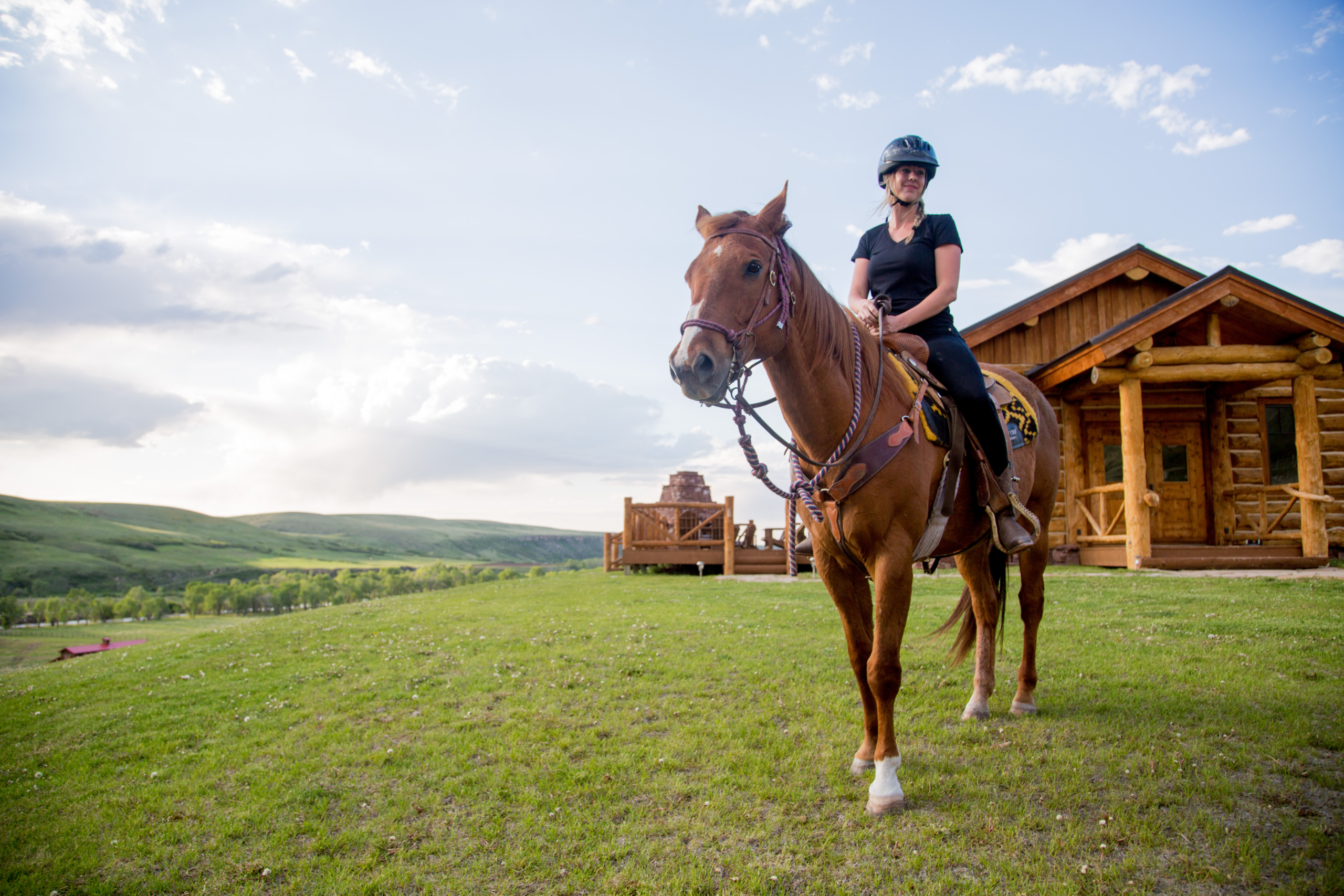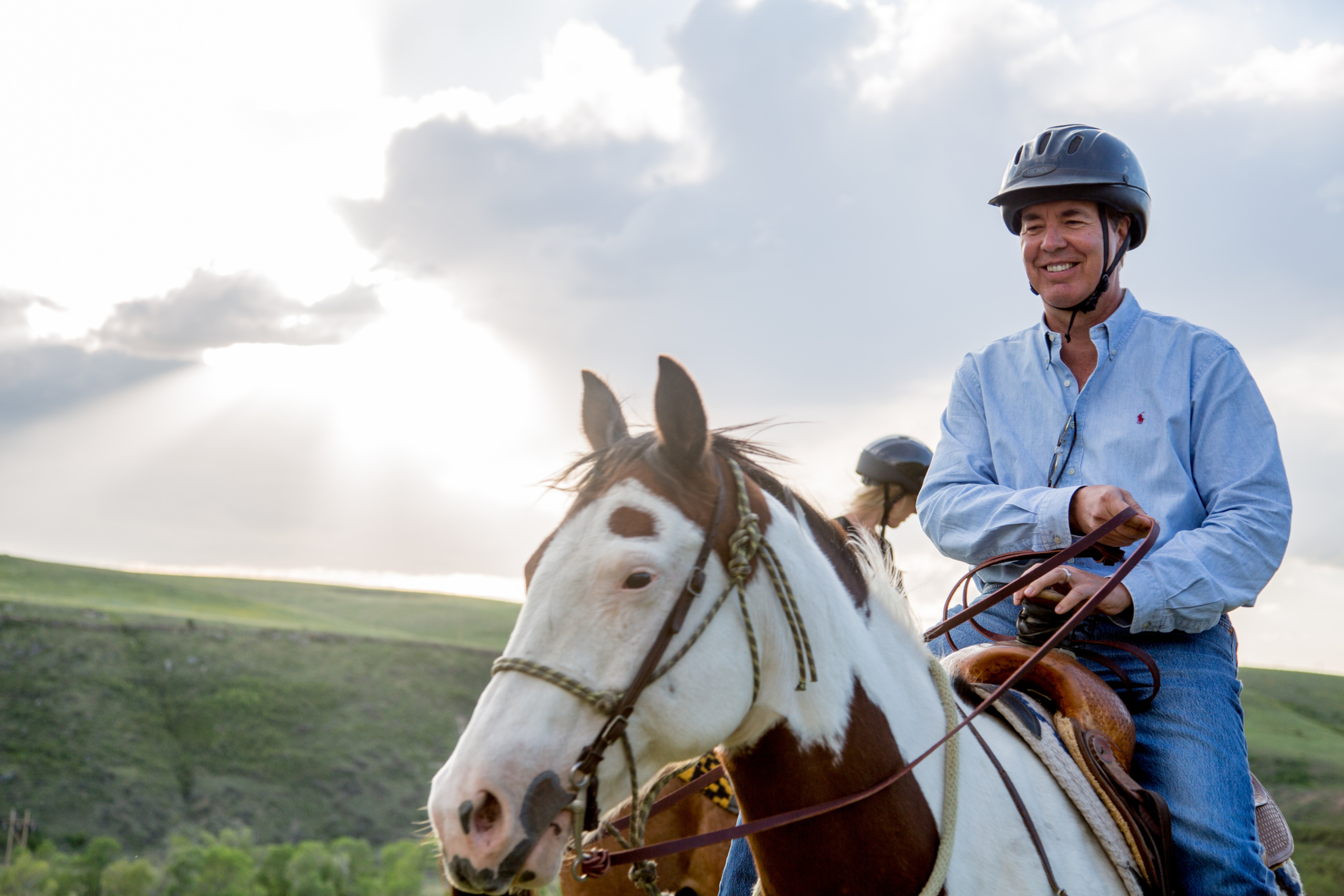Top 10 Tips
How to Horseback Ride
Are you thinking of going horseback riding for the first time? It’s only natural to feel a bit nervous about it. It is essential to be guided by an expert or a trained professional when you take up horse riding. Not only will they provide the support and reassurance that you need to feel safe and comfortable, but they can also share useful riding tips for beginners. After all, every expert was once a beginner too. They will be able to relate to what you are going through and provide personalized feedback.
As one lesson will not nearly be enough for you to be able to ride correctly, one of the best (and most enjoyable) ways to learn the basics is to go on a horseback riding vacation for beginners.
Not only will you have ample time to build up your horse riding skills, but you will also establish a relationship with your horse, meet like-minded people, and see a new country (or your own) from a different perspective.
If you’d like to get a head start before your first equestrian vacation, here are ten tips for beginner riders that will help you look like an expert in the saddle:
1. Wear proper horse riding equipment
Regardless of your preferred style of riding (Western or English riding), you don’t want to show up wearing a miniskirt, shorts, or beach sandals. Long pants and proper footwear are essential for horse riding. Any close-toed shoes will do the job, but it would be ideal if you have a pair of low heeled boots, no more than 1-1.5 inches, to avoid slipping through the stirrups.
Don’t wear scarves, purses, backpacks, or any other accessories that could get tangled in the reins, saddle, bushes, or trees. Lastly, it is always recommended to wear a helmet for your safety.
2. Greet your horse
Keep in mind that your horse is a living creature, not a vehicle that you can control at your will. The horse could also be nervous, tired, or even scared to have someone new riding him. Therefore, to establish a good relationship from the start, greet your horse when you’re introduced to him at the ranch.
To greet your horse, extend your arm and offer the back of your hand to him to smell and wait until he touches it with his nose. This simple action is called the “horseman’s handshake,” and you could interpret it as a way to ask him for permission to mount him.
3. Mount with confidence
If you’re nervous, the horse can feel it, and he might become uneasy too. Most horses are trained to be mounted on the left side. Your guide will probably be holding your horse’s head while you’re mounting, if that’s not the case, ask someone to do it, so he doesn’t move.
Lift your left foot into the stirrup, hold both reins with your left hand, and propel yourself up with your right leg, moving as smoothly as possible. Don’t push the horse down with your arms. This could hurt him; you can put your hands on his back or on the saddle, but just for balance.
4. Don’t slouch. Sit up straight and relaxed
Maybe you happened to watch the Kentucky Derby and felt excited enough to think that you had to hunch to ride as fast as possible, like the professional jockeys on TV. Keep in mind that a horseback ride is all about relaxation and enjoying the views around you.
The best position to keep control of your horse is to sit up straight and tall, relax your back, hold the reins gently, keep the ball of your foot in contact with the stirrups, and maintain your balance.
5. Be gentle with the reins
Your riding technique might depend on which style you’re learning, English or Western. In English riding, you take a rein in each hand, while in Western riding, you grab both reins in one hand. Whichever you choose, relax your arms and never pull too hard or you might hurt your horse. There’s rarely a good reason to lift the reins above your shoulder level; your arms should normally form right angles at the elbow.
To direct your horse to the left, move the left rein towards the left in a motion similar to opening a door. If you want to steer to the right, just do the same with the right rein. Stop by gently pulling back and pushing the heels down.
6. Don’t hold the saddle horn for balance
When riding in the West, you most likely will find a horn on your saddle, which you can hold on to. However, you should not count on the saddle horn to keep you balanced. If you feel unstable, try adjusting your posture, extending your legs, or holding the reins more gently.
If you make a habit of holding the saddle horn and there is an unexpected situation along the way, this is an ineffective position to keep your balance, and you’ll be more likely to fall. That’s why you should never get used to holding onto the saddle horn even when you’re just walking. It’s better to learn correctly from the get-go instead of developing bad habits that could hurt you in the long run.
7. Keep your eyes where you’re going
Don’t fix your gaze on your horse while you ride. As beautiful as he is, you must always keep your eyes on the trail. Staring at your horse would be the equivalent of paying attention to the hood of your car while ignoring the road ahead (you surely wouldn’t want to be in a car with such a driver).
It is said that you should look ahead through the horse’s ears. But as long as you keep sight of the path while holding a straight posture, that should be enough to have a safe trail riding trip.
8. Stay in tune with your horse
Stay calm and move your body in the rhythm of your horse. Feel the way he is walking and let him rock you from side to side without resisting. If you’re too tense, you might bounce, get thrown off balance, and cause some discomfort in your back.
Let the horse be. Of course, this doesn’t mean that you can let him do whatever he wants, but you can play the role of a leader, not the one of a dictator.
9. There’s nothing wrong with just walking
Remember point number 4? Read the first paragraph again and apply that mindset for tip number 9. Most horses have four gaits: walk, trot, canter, and gallop. As you might have deduced, galloping is out of the question when you’ve just started horseback riding.
The walk is the steadiest gait, and that could very well be the fastest you go when riding for the first time. It’s not worth putting your safety at risk. You can probably start trotting at one point, but anything faster is not advisable as a novice.
10. Dismount like a pro
Whoa there! Once you’re ready to dismount, make sure your horse is standing still. Also, it’s much better if someone holds the horse while you do so. Get both feet out of the stirrups, lean forward, swing your right leg over the horse, and jump off.
As when you mounted, try to do it as smoothly as you can. Thank your horse, give him some love, and embrace the feeling of being back on the ground after an unforgettable experience. You won’t be able to wait much longer to get back in the saddle!

